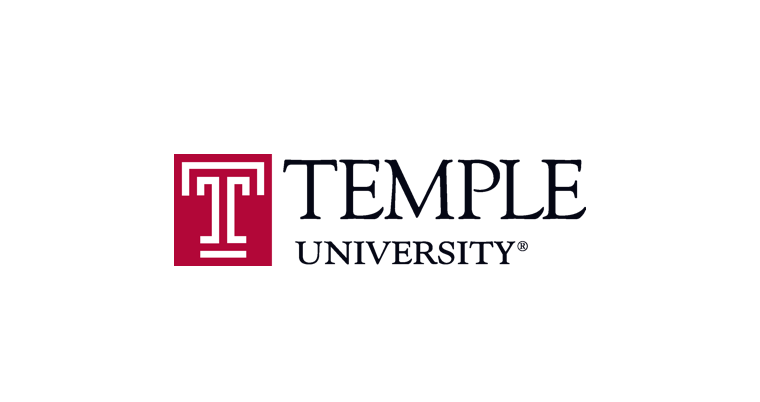Customer Story
Proactive Skill Development: Sustaining a Legacy of Learning
When agility and scale are leveraged to empower the modern learner to actively gain knowledge

The Challenge
The Learning and Development team at Temple University leverage the flexibility of technology to address variable skill development across their organization, without sacrificing their culture of employee-first engagement and success.
The Objective
With a mission to encourage team, individual and departmental objectives to further growth, learning and the extension of skill development, the Learning and Development team at Temple University leveraged the user-friendly accessibility of the Bridge Employee Development platform to support their employee-first framework to deliver on:
- Increased visibility into compliance-based learning objectives
Ensuring that institution-wide learning objectives were consistently met, without taxing existing resources. - Invigorated approaches to drive proactive learning
Allowing for other stakeholders to leverage easy-to-use authoring to create targeted content to address specific departmental needs. - Perpetuating the strong culture of shared knowledge
Actively removing roadblocks preventing deeper engagement in building and growing employee skills.
Transforming the Employee Experience:
Temple University’s Journey
Educational entrepreneur and founder of Temple University, Russell Herman Conwell, sought to democratize access to higher education. He believed that the pathway to personal success was largely based in education and those who were educated were “morally obligated” to educate those less fortunate. This driving passion to share knowledge remains steadfast at Temple University today. “We are an institution of learning. So I think our learners have really high expectations. Many of them are teachers, themselves, either faculty or instructors who are working for the development and growth of students. We have a high standard for the types of learning that we deliver for our colleagues at Temple,” explains Eric Brunner, Assistant Vice President for Learning and Development.
“The other thing to note is that the employees we are working with are so diverse, in terms of role, field of discipline. We need to build trainings that are going to be effective for learners who are graduate assistants working in laboratory support positions and also for learners who manage hundreds of thousands of dollars in fundraising efforts. We are charged with engaging learners at multiple organizational levels.”
What initially began as a quest to find a learning management system to track and support the completion of compliance-related learning quickly pivoted into a broader goal of furthering the culture of transparency and openness at Temple University. “It was particularly challenging to develop our own content in our previous LMS. We could develop [the content] using Captivate or Storyline, then we had to send it back to [the legacy LMS vendor] who had to convert it to a SCORM file. We had emails and Word docs going back and forth. It was a very convoluted process. Creation, distribution and tracking were very labor intensive in the legacy LMS so we began looking for a tool that would give us more design flexibility as well as ease of tracking and reporting.
Centralizing content, data, and access through Bridge LMS enabled Eric and his team to extend the already overtaxed resources of the Learning and Development team. With the intuitive UI, SSO-enabled capabilities, and automatic tracking of learning through dashboards and reporting, managers and team leaders are better aligned to the needs of their people.
Compliance-based training programs
“What previously was housed in two systems are now encompassed in Bridge and makes it a lot easier for us. From a compliance training perspective, previously, when a supervisor wanted to find out if their employees had completed their compliance trainings, they needed to reach out to us. We needed to look up that information and then share it with them. That’s was a really time intensive process, especially on our end. So we really appreciate that with Bridge, supervisors are directly logged in and can monitor their employee’s performance in a really easy way,” adds Michael J. Mullin, Assistant Director, Learning and Development.
Building cohesion and value from Day One
“Everyone is assigned compliance training sessions in Bridge from day one, they're used to being in Bridge. They know what it looks like, what it feels like. They also access it for live training. Since we offer our employees a variety of free workshops or low cost workshops every semester, they can access Bridge as their one-stop shop for employee learning and development.”
Extended value through flexible learning options
[We’re] exploring the feasibility of doing an online orientation for employees. We've launched a pilot for it with a very small program here at Temple and it seems to be going well so far. We hope to develop our own online content really soon. We have such a variety in roles and people who are working only overnight shifts and aren't able to come in for our live trainings. So the ability to offer them skill development online through Bridge would be a boon. We are in the process of integrating our LinkedIn Learning account to Bridge so hopefully soon, that content will also be available in through the Bridge library,” adds Michael.
Increased time to value, without overextending resources
“The Bridge authoring tool gives us flexibility and agility. We don't have to go someplace else in order to get those online programs up and running. The development time it took us to get our current compliance programs designed and uploaded was shortened significantly. We have several colleagues around the university who want to start building online trainings and maybe they don't have the expertise in Storyline or Captivate, like Eric and I do, but with Bridge’s authoring tool I was able to train a group on how to use it last week and they got it within 20 minutes. And now, they're building out compliance training for their own office,” exclaims Michael about the usability of the Bridge authoring tool.
Impact & Feedback:
Tracking Success
As Temple University continues their journey in creating a more engaging and proactive learning experience for their employees, Eric and Michael anticipate leveraging Bridge in numerous ways:
DEVELOPING TEAMS AND EMPLOYEES
Modern learning built for the modern learner:
“We’re really building a culture of learning. No one can afford turnover, but because we're a lean organization, we’re invested in keeping people, developing them and keeping them excited about Temple. Investing in their continuous learning is very important to us - it is tied to our history, mission, and culture,” said Eric about the connection between developing employees and engaging them to innovate for the future of Temple.
COACHING MANAGERS TO BE EFFECTIVE
Encouraging managers to communally investment in growth:
“It takes a village. Managers know that they are responsible for the compliance learning of their teams. It's less of an isolated event. It's unifying people around development so they're aware of what everyone on the team is doing. It's become more prevalent and a common conversation,” mentioned Eric.
ACTIONABLE INSIGHTS
Insightful data at your fingertips:
“We have managers, supervisors, and other University leaders reaching out to their teams and actively investing in the process now that it's being brought to their attention. That level of transparency wasn’t available in our previous system,” says Michael. Additionally, to ensure that Temple remains a compliant organization, with the help of Michael and the Chief Compliance Officer, Eric distributed a manager-specific email that summarized all the information they now have access to, including completion rates on a per team basis.
DRIVING BUSINESS IMPACTS
Automated functionality that drives personal accountability:
“I can't tell you how many employees used to say that registering for live trainings was an arduous process. Our legacy system would ask for a lot of information, including home address, credit card info and much more. It wouldn’t send reminders or provide options to add events to their calendars. Bridge makes it so much easier for our employees to access available learning opportunities, it removes roadblocks. Our employees have been so much happier with the ease of use. As a result, our program attrition has dropped significantly over time,” says Michael.
Industry
Higher Education
Established
1884
Headquarters
Philadelphia, Pennsylvania

